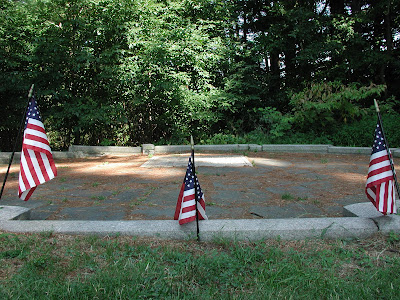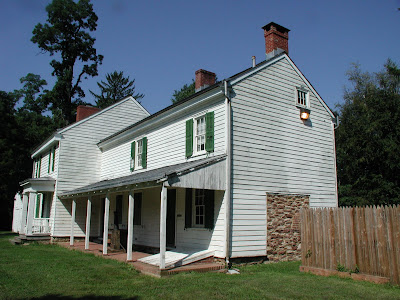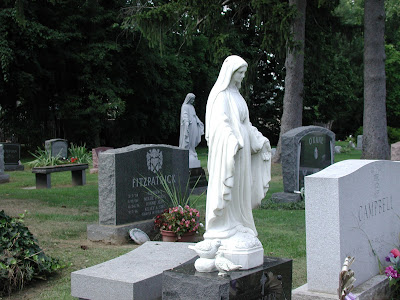Babysitter speaks fluent English. So then what is a driverse licence?
Tuesday, September 25, 2007
Babysitter Speaks Fluent English
Posted by
Denis
at
4:29 AM
0
comments
![]()
![]()
Labels: Funny, Funny Humor, Humor
Thursday, September 13, 2007
Kurt Gödel and John von Neumann Two Of The Greatest Mathematicians Resting In Peace Within 10 Feet Of Each Other
John von Neumann
John von Neumann (Hungarian Margittai Neumann János Lajos; born December 28, 1903 in Budapest, Austria-Hungary; died February 8, 1957 in Washington D.C., United States) was an Austria-Hungary-born American mathematician who made contributions to quantum physics, functional analysis, set theory, topology, economics, computer science, numerical analysis, hydrodynamics (of explosions), statistics and many other mathematical fields as one of history's outstanding mathematicians.
Kurt Gödel
Kurt Gödel (IPA: [kuɹt gøːdl]) (April 28, 1906 Brünn, Austria-Hungary (now Brno, Czech Republic) – January 14, 1978 Princeton, New Jersey) was an Austrian American mathematician and philosopher.
One of the most significant logicians of all time, Gödel's work has had immense impact upon scientific and philosophical thinking in the 20th century, a time when many, such as Bertrand Russell, A. N. Whitehead and David Hilbert, were attempting to use logic and set theory to understand the foundations of mathematics.
Gödel was shy, withdrawn and eccentric. He would wear warm, winter clothing in the middle of summer. In the middle of winter, he would leave all of the windows open in his home because he believed that conspirators were trying to assassinate him with poison gas. He was a somewhat sickly man and was prescribed specific diets and medical regimens by doctors, but Gödel often ignored their advice or even would do the opposite of what his prescription indicated. This caused him to suffer further illness. In the 1940s he suffered from a bleeding ulcer, but his distrust of doctors led him to delay treatment; he risked death and was saved only by emergency blood transfusion.
Amongst his delusions was the belief that unknown villains were trying to kill him by poisoning his food. For this reason, Gödel would eat only his wife's cooking, refusing even to eat his own cooking for fear of being poisoned.
Late in 1977, Adele became incapacitated due to illness and so could no longer cook for Gödel. Due to his paranoia, he refused to eat any food at all and thus died of "malnutrition and inanition caused by personality disturbance" in Princeton Hospital on January 14, 1978. He weighed 65 pounds.
Google Map Location Of The Princeton Cemetery
View Larger Map
Posted by
Denis
at
9:05 AM
0
comments
![]()
![]()
Labels: Cemetery, Godel, Gödel, Graveyard, Princeton, Tombstone, von Neumann
Monday, September 10, 2007
Princeton Battlefield January 3rd, 1777 Pics
Click on the pictures for a larger version
Princeton Battlefield Monument
Princeton Battlefield Grave
Princeton Battlefield Grave Inscription
Near here lie buried the American and British officers and soldiers who fell in the battle of Princeton January 3rd, 1777.
Here freedom stood by slaughtered friend and foe and ere the wrath paled or that sunset died looked through the ages; then, with eyes aglow, laid then to wait that future side by side.
Alfred Noyes 1880-1958
Thomas Clarke House Front
Thomas Clarke House
Thomas Clarke House Shed
Thomas Clarke House Cannon
Posted by
Denis
at
9:22 AM
0
comments
![]()
![]()
Labels: Battlefield, History, Monument, New Jersey, Princeton, USA
Friday, September 7, 2007
Nikon Podcast #3: Exclusive Interview with John Mayer
Host Mark Ellwood interviews John Mayer about great photography, John's summer tour and the blog he's doing for Nikon Live. Music composed by Frank Ferrucci.
Nikon Podcast #3: Exclusive Interview with John Mayer
Posted by
Denis
at
11:29 AM
1 comments
![]()
![]()
Labels: Digital SLR, Nikon, Photography, Podcast
Nikon Podcast #2: Special Events & Group Photography
Join Mark Ellwood and photography expert Steve Heiner as they talk about group pictures and shooting at special events. Music composed by Frank Ferrucci.
Nikon Podcast #2: Special Events & Group Photography
Posted by
Denis
at
11:28 AM
0
comments
![]()
![]()
Labels: Digital SLR, Nikon, Photography, Podcast
Nikon Podcast #1: All About D-SLR
Join Mark Ellwood and photography expert Steve Heiner as they discuss the world of digital SLR cameras. Music composed by Frank Ferrucci.
Nikon Podcast #1: All About D-SLR
Posted by
Denis
at
11:28 AM
0
comments
![]()
![]()
Labels: Digital SLR, Nikon, Nikon Digital Learning Group, Photography, Podcast
Thursday, September 6, 2007
Manure...A True Story
Got this from a friend
Manure...A True Story
Manure: In the 16th and 17th centuries, everything had to be transported by ship and it was also before commercial fertilizer's invention, so large shipments of manure were common.
It was shipped dry, because in dry form it weighed a lot less than when wet, but once water (at sea) hit it, it not only became heavier, but the process of fermentation began again, of which a by product is methane gas. As the stuff was stored below decks in bundles you can see what could (and did) happen.
Methane began to build up below decks and the first time someone came below at night with a lantern, BOOOOM!
Several ships were destroyed in this manner before it was determined just what was happening .
After that, the bundles of manure were always stamped with the term "Ship High In Transit", which meant for the sailors to stow it high enough off the lower decks so that any water that came into the hold would not touch this volatile cargo and start the production of methane.
Thus evolved the term " S.H.I.T. " , (Ship High In Transport) which has come down through the centuries and is in use to this very day.
You probably did not know the true history of this word.
Posted by
Denis
at
6:52 AM
0
comments
![]()
![]()














